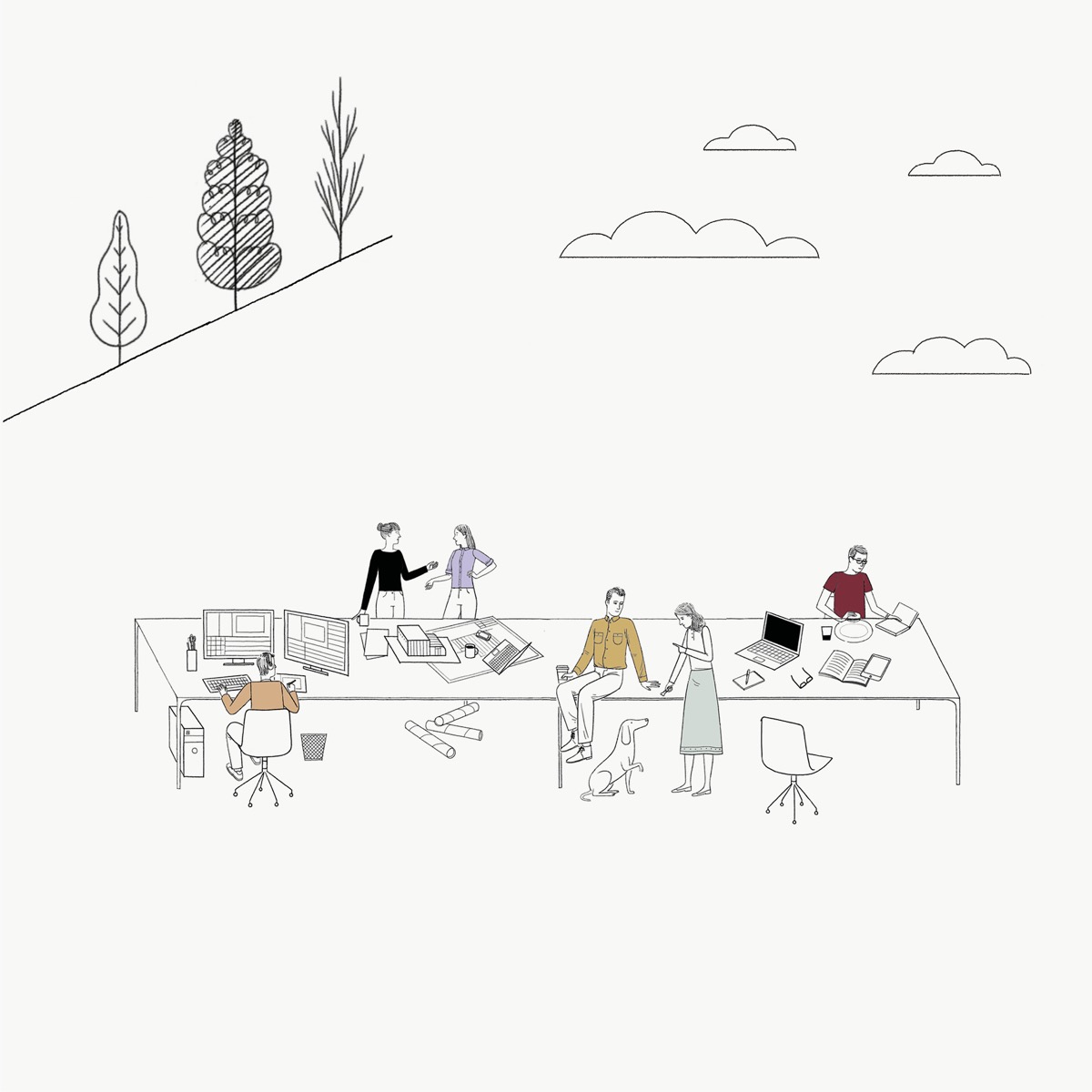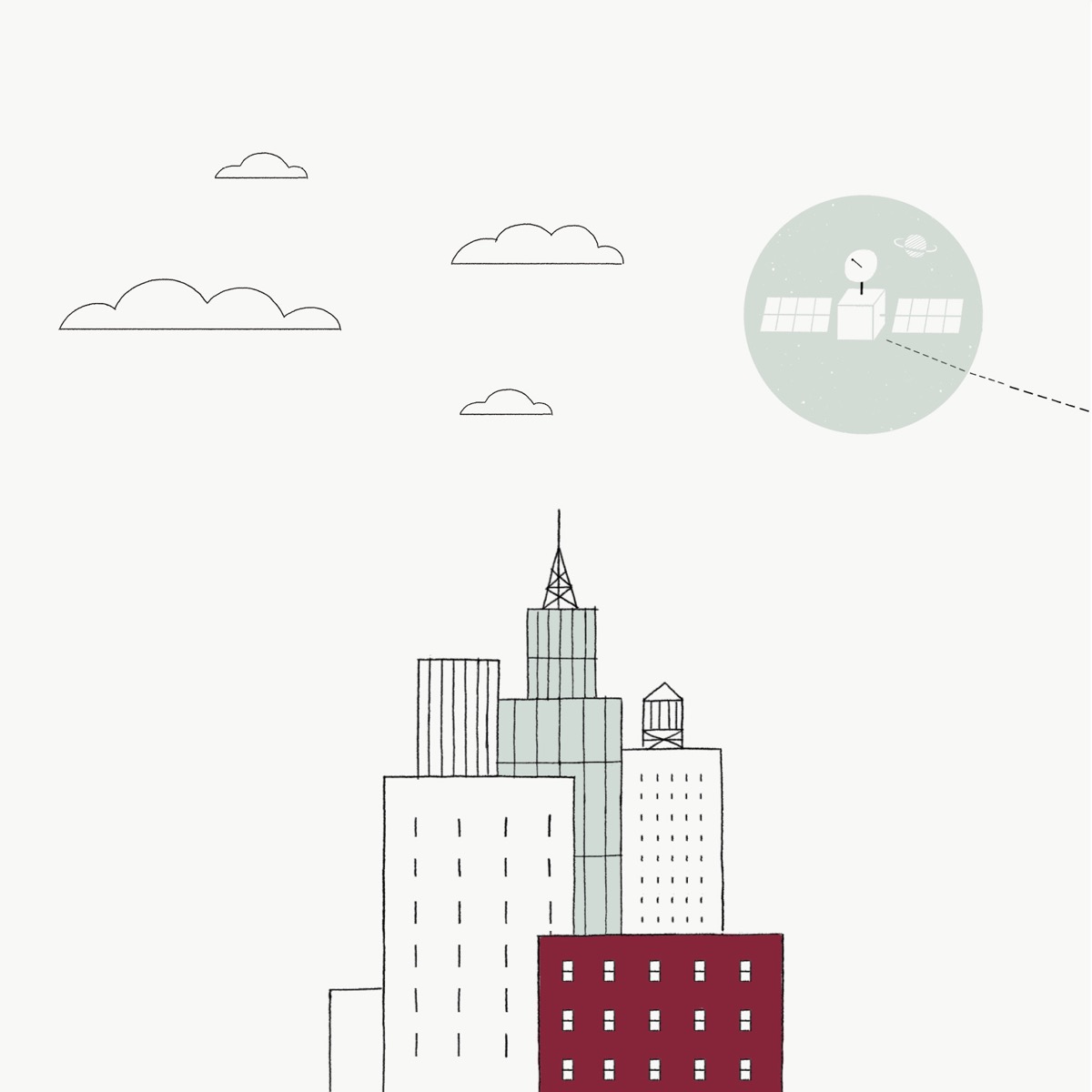
Our perception of spaces involves multiple senses. All the senses, in fact. In a moment when offices are being redesigned as hybrid workspaces, with a growing focus on sharing rather than individual labor, it is important to consider which elements can nurture physical wellbeing. Because wellness is a question of harmony: a convergence between the physical characteristics of space and the physiological sensations we expect to experience inside it. We spoke with Davide Ruzzon, director of the Tuned department of Lombardini22 and scientific director of the master program NAAD, Neuroscience Applied to Architectural Design, at IUAV University of Venice. Our overview also includes furnishings and acoustic wellbeing: the limits and possibilities in the refurbishing of a workspace.
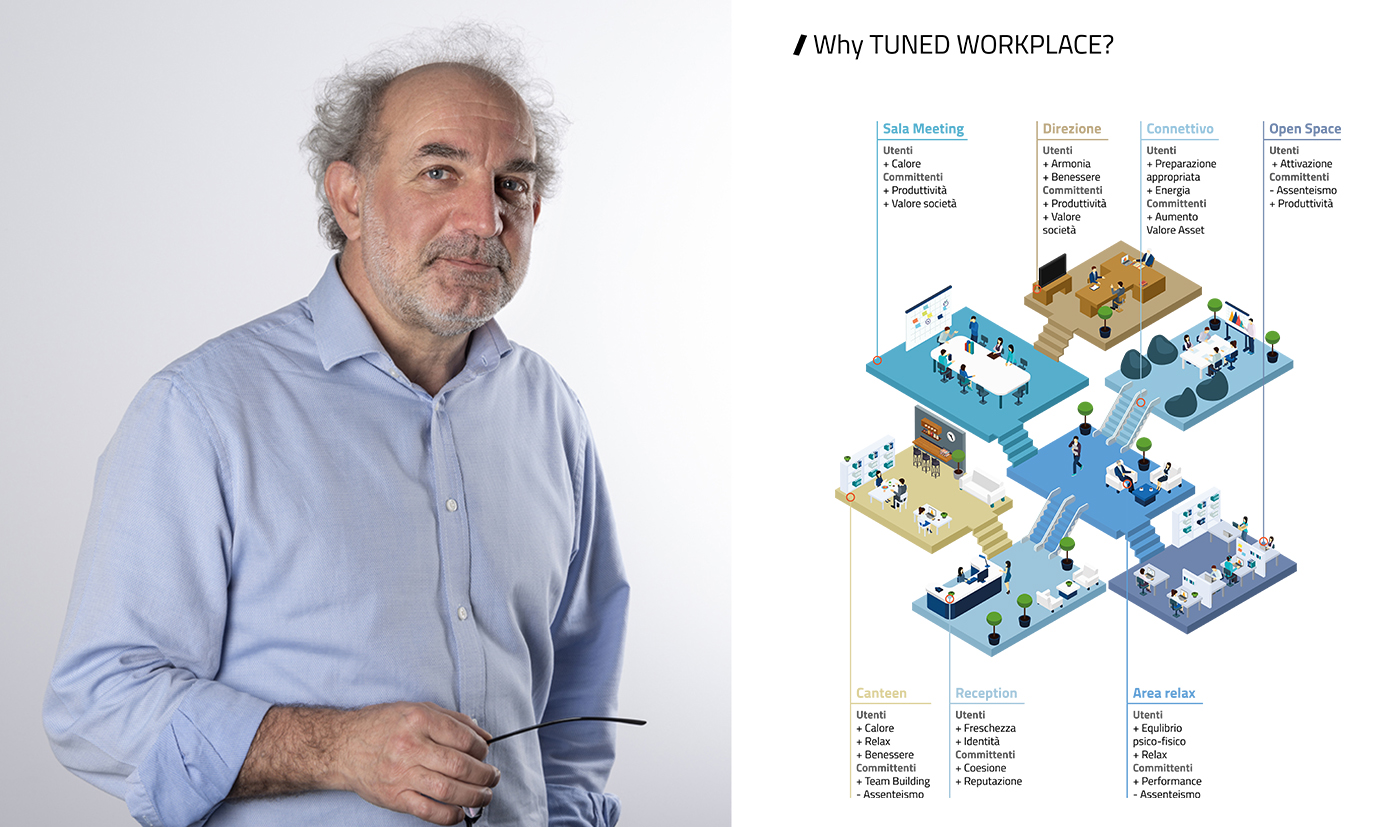

Every joint in our body,” Ruzzon explains, “perceives the physical space in which we move. Having no roots, human beings perceive space with the tendons, the shoulder muscles, the skeleton. Therefore when a space is not designed to get into tune with the expectations of users, this failure produces mental and physical fatigue, as we try to adapt our system to an unsuitable situation. This means that energies are taken away from the social interaction and specific activities for which the office was made. Moreover, the chronic character of this effort to adapt generates stress, as we know. All design factors come into play in a symphonic way, in order to avoid this outcome. Variability of atmospheres – from the entrance to the meeting rooms, the cubicles to the shared areas or lounges – and of the emotional expectations of users is an indispensable feature of a good project. Much more frequently, alas, the typical parameters of functionalist modernism prevail, though they are over a century old, or we see spaces that are conceived as if they had to reflect the emotional expectations of the architect, not of the people who will spend years of their lives inside those locations.”
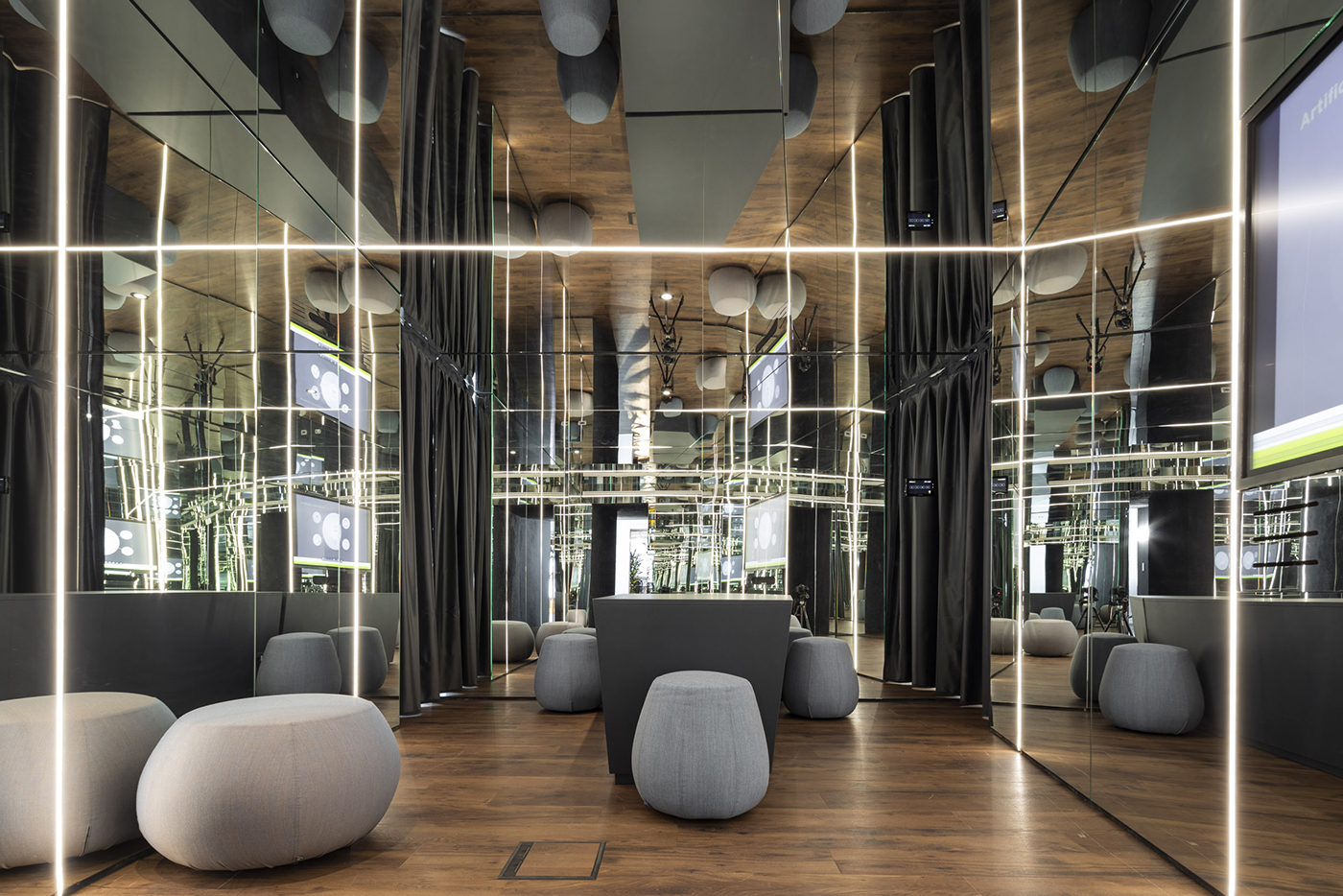

The psychophysical quality of a workspace can be objectively measured. “We can measure and compare changes in stress level and other psychological and physiological parameters, including those of the brain, such as attention span or readiness to cooperate. When the task is to modify an existing office, by constructing a framework of analysis with tests and/or experiments before taking action we are able to measure the differences in the parameters before and after implementation.”
But how can we cope with the problematic issues of hybrid workspaces, conceived for differentiated sharing?
“The office will be a multifunctional hub. The coexistence of different activities and user profiles in the same space requires control over acoustic load. It is possible to create sonic islands that capture speech through the use of coverings, umbrellas and filters. Nevertheless, the intelligent placement of nuclei of interaction is fundamental – starting with analysis of the acoustic load of the activity, and correct dimensioning of space. As in the case of acoustic comfort, we can also address all the other aspects. But it has to be done across the board: inside a coherent framework, where each parameter contributes to make that activity, that room into an effective factor, because it is in harmony with the physiological sensation we expect to experience.”
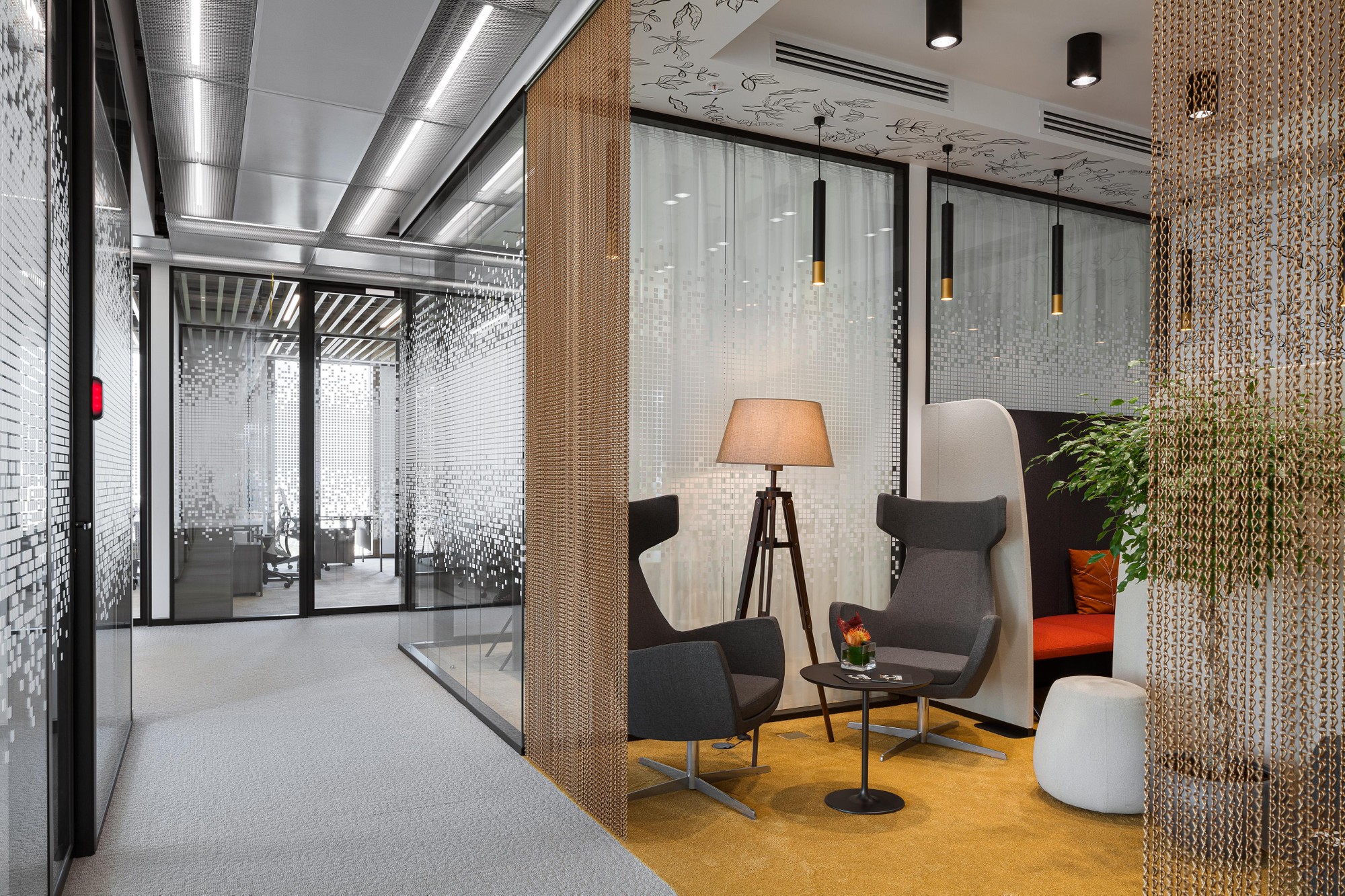

In a work environment containing multiple people at the same time, the most frequent factor of disturbance is the more or less loud buzz caused by speech. The result is difficulty in spoken communication, and an increase in the overall noise level. Impaired communication causes lack of concentration and produces stress, with repercussions on productivity and general personal health. Office furnishings can contribute to improve acoustic comfort in workspaces, but they cannot suffice on their own. Divider screens or panels with sound-absorbing properties are undoubtedly useful to improve the sensation of privacy or acoustic comfort. But in spite of the excellent characteristics of the materials, they must be gauged in relation to architectural infrastructures, which are responsible for the transmission, reverberation or isolation of sound, whether the noise comes from inside the office or from the outside world. The transmission or insulation capacity with respect to certain sound frequencies depends for the most part on construction materials. Walls, ceilings and floors must be able to absorb acoustic energy and reverberation (the time in which sound remains in the air), in order to permit acoustic comfort and high quality of speech comprehension in conversation.
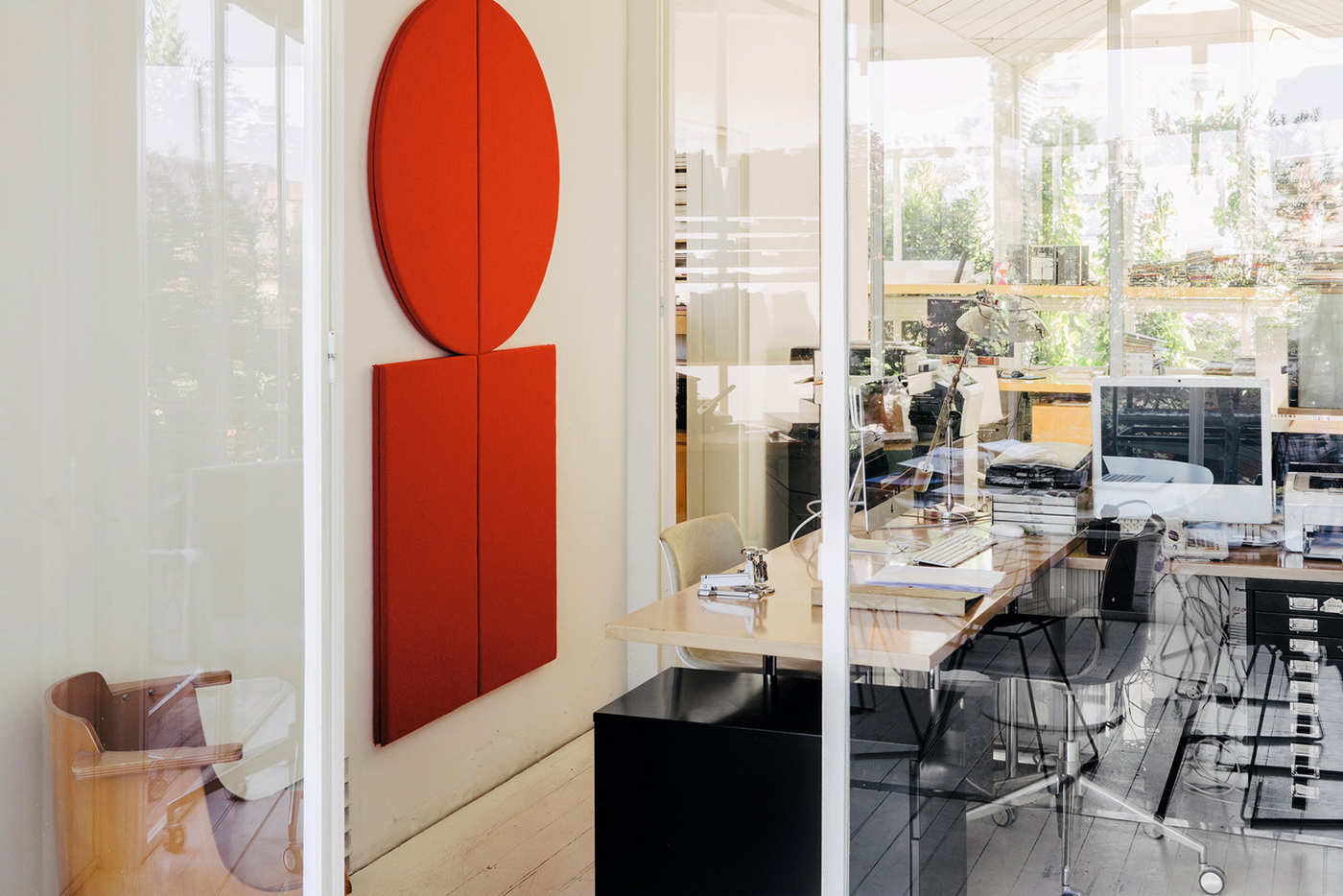

For example, we could reimagine video conference rooms to find a balance between sealed spaces (where sound can pass even through the smallest gaps) and sound-absorbing tools. These would include panels that attenuate sound levels and reverberation time, enabling people to hear things more clearly – especially when they are interacting from a remote location. Sound-absorbing furnishings such as decorative panels, together with drapes or sound-absorbing fabrics, can become a solution – particularly when combined with less rigid floors and specific products for ceilings, designed in coordination with experts on acoustical engineering.


